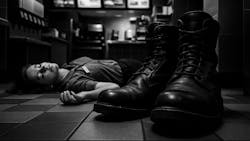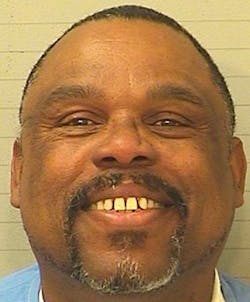How to Catch A Criminal: These Boots Were Made for Murder
Key Highlights
- Crime scene investigators collected all possible evidence, emphasizing the importance of thoroughness in investigations.
- A small piece of foam rubber found at the scene was crucial in linking the suspect's boots to the crime after years of being unidentifiable.
- The case highlights how seemingly insignificant evidence can become the key to justice with modern forensic methods.
More on OFFICER.com
Download the September/October issue of OFFICER Magazine.
Click Here to subscribe to OFFICER Magazine.
Every officer with a decent amount of time on the job knows the unexpected turns an investigation can take. Seeing a major case through to completion often involves giving up on a theory and taking your investigation in a different direction as new information becomes available. In How to Catch A Criminal, we look at the many ways not-so-perfect crimes are solved. This month, a strange find at a crime scene proves invaluable decades later.
During a homicide investigation, you can expect crime scene investigators to pore over the scene for hours and hours identifying, photographing and collecting anything that might be related to the crime. Be it a fingerprint, a drop of blood, clothing, potential weapons, cellphones, scraps of paper or just about anything else. It is always better to be cautious and take everything, even if it doesn’t matter later. Investigators simply can’t risk leaving anything behind, because it may be crucial later, and you only have one chance to process a crime scene. There is no way of knowing how a case will play out, or what evidence left behind could end up being a linchpin for the defense. On the other hand, there is no way of knowing what seemingly unimportant collected item could become the smoking gun for the prosecution.
On Oct. 30, 1984, while the rest of Torrance, California, made last-minute preparations for their Halloween celebrations, 21-year-old Robin Hoynes was burning the midnight oil. She was working the late shift as a manager at Kentucky Fried Chicken. Though Robin was the daytime manager, she had swapped shifts with a friend so she could enjoy a date with a new boyfriend. Part of Robin’s duties closing the restaurant that night included counting the money from the register and securing it in the safe before she went home. Robin took her job seriously and always made sure the doors were locked before she began handling the cash after hours. When the other manager working that evening was leaving, Robin was finishing up the count and presumably wouldn’t be far behind him. On Halloween morning, the coworker Robin swapped hours with arrived for the morning shift to find a scene straight from a horror movie. Unfortunately, this gruesome sight wasn’t the work of makeup and costumes. Robin Hoynes was face down in the backroom, in a pool of blood, with multiple stab and slash wounds to her back and neck.
Robin’s murder initially looked like a robbery, and whoever came for the money didn’t want any living witnesses. Oddly, there was no sign of forced entry, which means Robin would have had to unlock the doors while she was counting the cash drawer. Given the kind of person Robin was, nobody was going to be allowed near the money she was responsible for. Sure enough, a check of the restaurant’s safe determined all the money was accounted for. Robin had the forethought to secure the money before letting the robber inside. The lock on the safe had been scraped, but the robber gave up on trying to force it open before fleeing the scene. The leading theory was that someone Robin knew had come to the door, and she locked up the money before letting them in. When the acquaintance turned robber realized Robin would be able to identify them if they tried anything, they attacked, stabbing her twice in the back and slicing her throat. This also accounted for the lack of defensive wounds or signs of a struggle. Robin never thought this person would do her any harm. However, the halfhearted attempt to break into the safe after going through the trouble of killing Robin was a bit baffling. There was another thing about this scene that puzzled investigators. While processing the crime scene, they came across a small misshapen piece of foam rubber lying near Robin’s body. There was nothing around the restaurant that the foam could have fallen off, meaning whatever object the foam came from was brought with the killer, or taken with them when they left. Investigators thought perhaps it came from a backpack’s lining or a briefcase’s handle.
After questioning the staff members, one major clue was uncovered: a former employee was supposed to show up on the night of the 30th to turn in his uniforms. That employee was William Marshall, who held the position of assistant manager until money started to go missing when he was left in charge. After several chances, Marshall was given his walking papers. According to his criminal history, Marshall was supporting a PCP habit, which could be a motive for robbery. As an assistant manager, Marshall also had the combination to the restaurant safe, at least up until he was fired. Management had since changed the combination, which would explain why the money wasn’t stolen and why there wasn’t much effort put into breaking the lock. Marshall thought he could get in, take care of Robin, open the safe and be gone in a flash. The investigation hit a major roadblock when William Marshall came in for questioning. He explained he was at home on the night of the murder and even had his girlfriend, Yvonne Hargrove, vouch for him. Without any way to disprove his alibi, the case went cold, but investigators knew Marshall was bound to slip up, and they kept him under surveillance.
On Nov. 10, William Marshall was pulled over after officers watched him lurking around a different KFC store in the area. Marshall had a knife in his possession and was wearing gloves at the time of his arrest. While this all appeared quite damming for Marshall, the district attorney’s office did not want to proceed with the murder case based on circumstantial evidence found after the fact. Plus, this new information still didn’t disprove his alibi. With that William Marshall was released without charge and Robin Hoynes’ murder would go unsolved for 20 years.
In October 2003, Torrance Police Detective Jim Wallace began looking through cold cases and decided to reopen Robin’s. As he looked through the evidence, he examined the piece of foam rubber that no one had been able to identify up to that point. On a hunch, Wallace checked the evidence room for items taken from William Marshall from his arrest in November 1984. He found exactly what he was looking for: Marshall’s boots. The foam rubber was an exact fit for a chunk missing from the lining of one of the worn-out boots. That piece of foam was exactly what Wallace needed to place William Marshall at the scene of the murder. Thanks to this new evidence, Wallace wanted to re-interview Marshall and his former girlfriend, Yvonne Hargrove.
William Marshall was interviewed at his home and maintained his innocence, but was more open after detectives noticed the unusual wear pattern in all of his shoes. He explained that he has always slipped his boots and shoes off rather than untying them before taking them off, resulting in the backs of his shoes wearing out. Yvonne Hargrove however, had plenty more to say. She admitted that she lied to police about Marshall’s whereabouts on the night of the murder. She explained that he confessed to her about stabbing Robin and trying to open the safe. Hargrove lied during the initial investigation because thanks to past instances of domestic abuse, she was afraid of what William would do to her if she told the truth.
Thanks to this new evidence, William Marshall, now a California Department of Forestry Fire Captain, was arrested at his fire station in September 2006. One year later, he was found guilty at trial. In late October 2007, 23 years after he thought he got away with it, William Marshall was sentenced to life without parole. For his sentence, he has himself, a keen-eyed detective, a remorseful ex-girlfriend, and his own worn-out boots to thank.
About the Author

Officer Brendan Rodela, Contributing Editor
Brendan Rodela is a Sergeant for the Lincoln County (NM) Sheriff's Office. He holds a degree in Criminal Justice and is a certified instructor with specialized training in Domestic Violence and Interactions with Persons with Mental Impairments.

